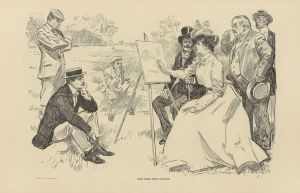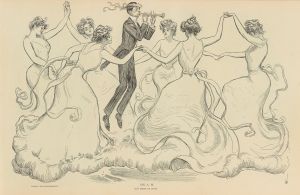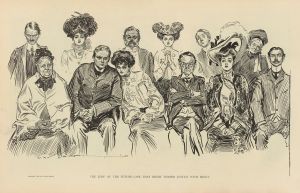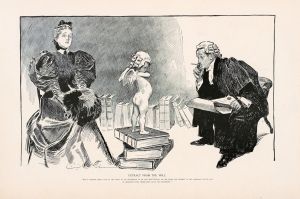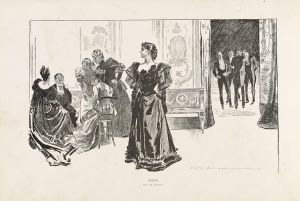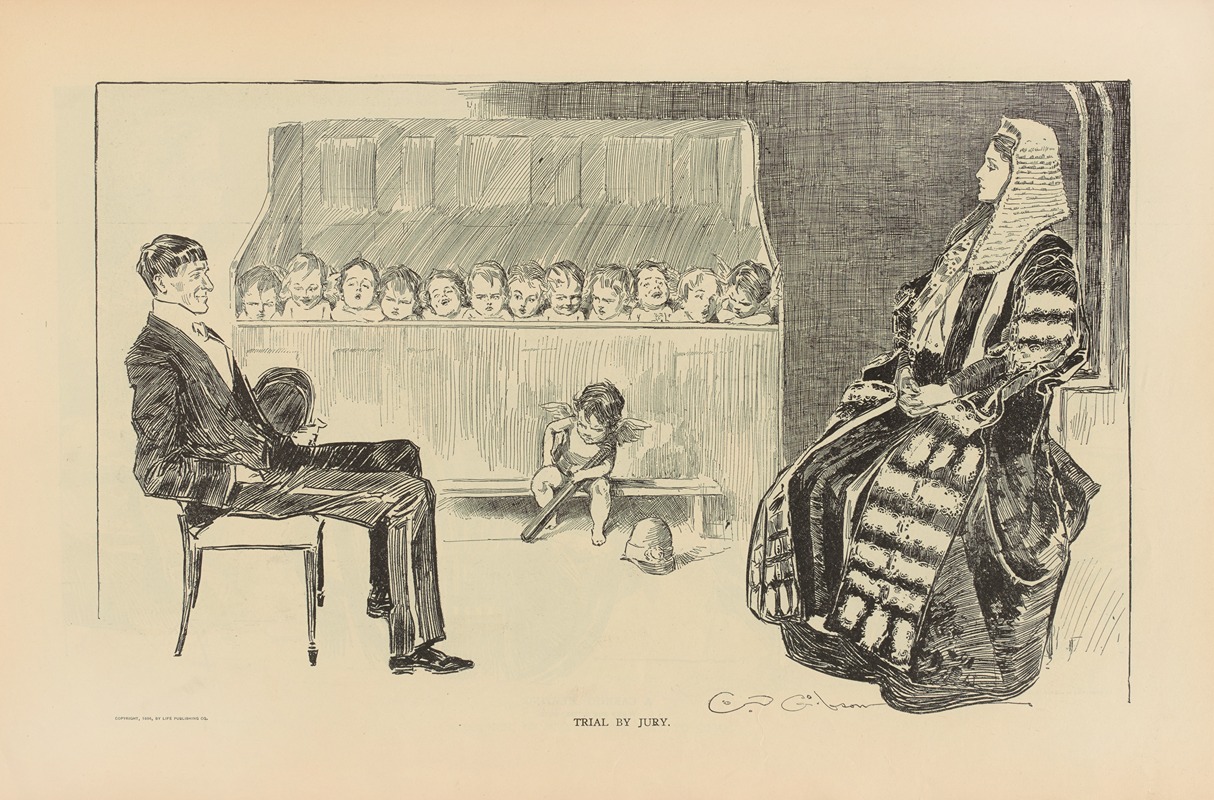
Trial by jury
A hand-painted replica of Charles Dana Gibson’s masterpiece Trial by jury, meticulously crafted by professional artists to capture the true essence of the original. Each piece is created with museum-quality canvas and rare mineral pigments, carefully painted by experienced artists with delicate brushstrokes and rich, layered colors to perfectly recreate the texture of the original artwork. Unlike machine-printed reproductions, this hand-painted version brings the painting to life, infused with the artist’s emotions and skill in every stroke. Whether for personal collection or home decoration, it instantly elevates the artistic atmosphere of any space.
Charles Dana Gibson was an influential American illustrator best known for his creation of the "Gibson Girl," a representation of the idealized American woman at the turn of the 20th century. One of his notable works is the illustration titled "Trial by Jury." This piece is a part of Gibson's broader body of work that often depicted social scenes with a satirical edge, capturing the nuances of American society during his time.
"Trial by Jury" is an illustration that showcases Gibson's keen eye for detail and his ability to convey complex social dynamics through his art. The scene typically features a courtroom setting, a common subject in Gibson's work, where he explores themes of justice, gender roles, and societal expectations. Gibson's illustrations often included a mix of humor and critique, reflecting the cultural and social issues of his era.
In "Trial by Jury," Gibson employs his signature style, characterized by precise line work and expressive characters. The artwork likely includes a jury composed of individuals whose expressions and postures convey a range of emotions and attitudes, from skepticism to amusement. This reflects Gibson's talent for capturing human nature and the subtleties of interpersonal interactions.
Gibson's work, including "Trial by Jury," was published in popular magazines of the time, such as Life and Harper's Weekly. These publications were instrumental in disseminating his illustrations to a wide audience, contributing to his reputation as a leading illustrator of his day. His ability to comment on societal norms and behaviors through his art made his work both entertaining and thought-provoking for contemporary audiences.
The "Gibson Girl," although not the central focus of "Trial by Jury," is an important context for understanding Gibson's work. The Gibson Girl was a cultural icon that embodied the independent and modern woman of the early 1900s. While "Trial by Jury" may not directly feature the Gibson Girl, the themes of gender and societal roles present in the illustration are consistent with the broader themes Gibson explored through this iconic figure.
Gibson's illustrations, including "Trial by Jury," played a significant role in shaping public perceptions of American society during the late 19th and early 20th centuries. His work provided commentary on the evolving social landscape, capturing the tensions and transformations of the era. Through his art, Gibson offered a lens through which audiences could examine and reflect on the cultural norms and values of their time.
Overall, "Trial by Jury" exemplifies Charles Dana Gibson's skill as an illustrator and his ability to engage with the social issues of his day. His work remains a valuable historical resource, offering insights into the cultural and societal dynamics of early 20th-century America.






